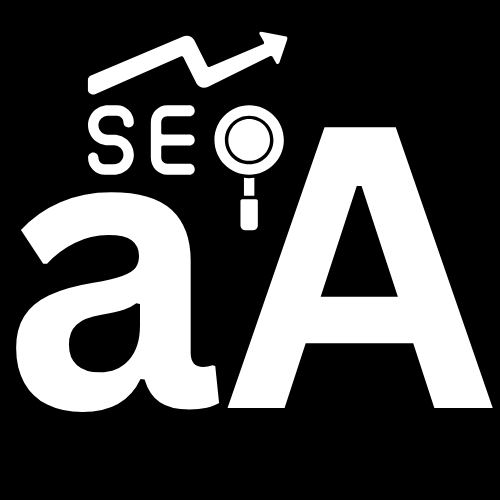In the fast-paced digital world, mastering on-page SEO services is essential for optimizing your website to meet the needs of both search engines and users. This guide will walk you through the core principles of on-page SEO, explaining why it’s crucial, what elements to focus on, and how to enhance your website’s visibility.
What is On-Page SEO?
On-page SEO involves optimizing the elements directly on your website to improve its search engine rankings. Unlike off-page SEO, which relies on external factors like backlinks, on-page SEO enhances the content, HTML source code, and user experience of individual pages. Mastering on-page SEO ensures that your site is not only search-engine-friendly but also valuable and engaging for visitors.
Why On-Page SEO Matters
1. Boosts Search Engine Rankings
Search engines like Google use various on-page SEO factors to assess the relevance and quality of your web pages. These factors are major in determining how your site ranks in search results. You can improve your rankings and attract more organic traffic by implementing effective on-page SEO strategies.
2. Enhances User Experience
Well-optimized pages provide a smooth and enjoyable experience for users. This can lead to:
- Long time spent on your site.
- Reduced bounce rates.
- Increased conversions and user satisfaction.
3. Attracts Targeted Traffic
By integrating relevant keywords and addressing user intent, on-page SEO helps draw visitors who are genuinely interested in your content or services.
Key Elements
Title Tags and Meta Descriptions
- Title Tags: Ensure that your title tag includes your primary keyword and is under 60 characters. For example: “Master On-Page SEO to Improve Rankings”.
- Meta Descriptions: Write compelling summaries that are 150-160 characters long and include the main keyword. This helps improve click-through rates (CTR) from search results.
Example:
- Title: Master On-Page SEO to Improve Website Rankings
- Meta Description: Discover the best practices for on-page SEO to boost your search rankings and attract organic traffic.
Keyword Optimization
Using your main keyword strategically can make a big difference. Place it in:
- The first 100 words of the content.
- Headings and subheadings (H1, H2, H3).
- Image alt attributes and file names.
- URLs.
Example: “Optimize your website with effective on-page SEO strategies to boost visibility and engagement.”
Header Tags (H1, H2, H3)
Properly structured headers improve content readability and SEO value. Use your main keyword and related keywords in headers for better search engine understanding.
High-Quality Content
Content remains king, especially for on-page SEO. Aim to:
- Create informative, engaging, and unique articles.
- Integrate the main keyword naturally throughout the content without keyword stuffing.
- Address user intent by providing relevant answers and solutions.
Internal Linking
Linking to related pages on your site enhances navigation and helps distribute link equity. For example, when discussing advanced optimization strategies, link to a post about technical SEO.
Image Optimization
- Compress images to reduce load time.
- Use descriptive filenames and alt tags that include relevant keywords, e.g., “on-page-seo-tips.jpg”.
- Add captions for better context and user understanding.
Additional On-Page SEO Best Practices
Mobile Optimization
With Google’s mobile-first indexing, having a responsive, mobile-friendly site is crucial. Ensure that your site is easy to navigate on smartphones and tablets, with fast loading times and a seamless user experience.
Page Speed Optimization
A fast-loading page can significantly impact your rankings. Use tools like Google PageSpeed Insights to identify performance issues and improve loading speed.
On-Page SEO Checklist
Here’s a quick checklist to help you cover the essentials:
- ✅ Include the primary keyword in titles, headings, and throughout the content.
- ✅ Optimize images with appropriate alt tags and compression.
- ✅ Write a compelling meta description that includes the target keyword.
- ✅ Keep URLs clean and keyword-rich.
- ✅ Use internal and external links strategically.
- ✅ Ensure readability with short paragraphs and bullet points.
- ✅ Test for mobile-friendliness and page speed.
Advanced Techniques
Schema Markup
Implementing structured data can help search engines better understand your content and display it more prominently in search results. Use schema markup, such as FAQ schema, to increase the chances of appearing in rich snippets.
Regular Content Updates
Update your content regularly to keep it fresh, relevant, and aligned with user intent. This helps maintain or improve your rankings over time.
User Intent Optimization
Understanding your target audience and addressing their needs is fundamental. Optimize your content by focusing on what users are searching for and providing comprehensive answers.
Common On-Page SEO Mistakes to Avoid
- Keyword Stuffing: Overloading your content with keywords can make it difficult to read and harm your SEO efforts.
- Ignoring Meta Descriptions: A blank or poorly written meta description can hurt your CTR.
- Duplicate Content: Search engines may penalize pages with identical content, so avoid duplication.
- Neglecting Mobile Optimization: Ensure your site is responsive and navigable on mobile devices.
Final Thoughts
On-page SEO is a crucial aspect of your website’s success. By focusing on keyword optimization, high-quality content, and a positive user experience, you can enhance your site’s visibility and stay ahead of competitors. Start implementing these practices today to see your site climb the rankings and attract more organic traffic.
Mastering on-page SEO doesn’t just improve search engine rankings—it enriches the user experience and drives sustainable growth. Take the time to optimize your content, structure your site effectively, and implement the best practices outlined in this guide. With consistent effort, your website can become a valuable resource that meets the needs of both search engines and users alike.






